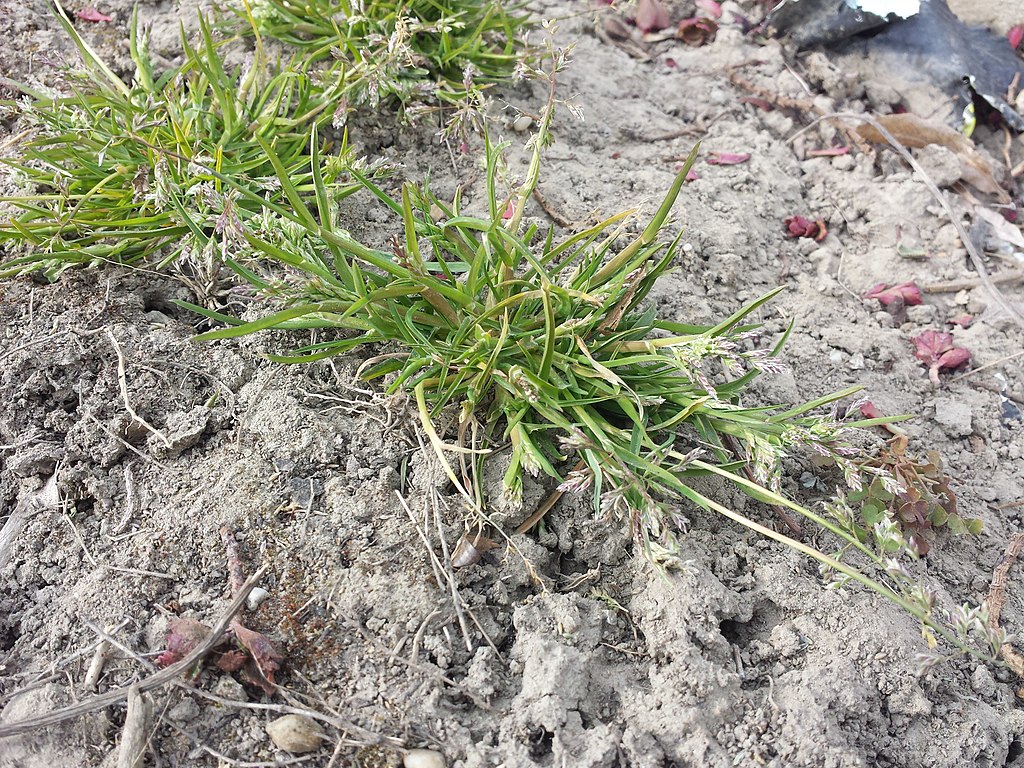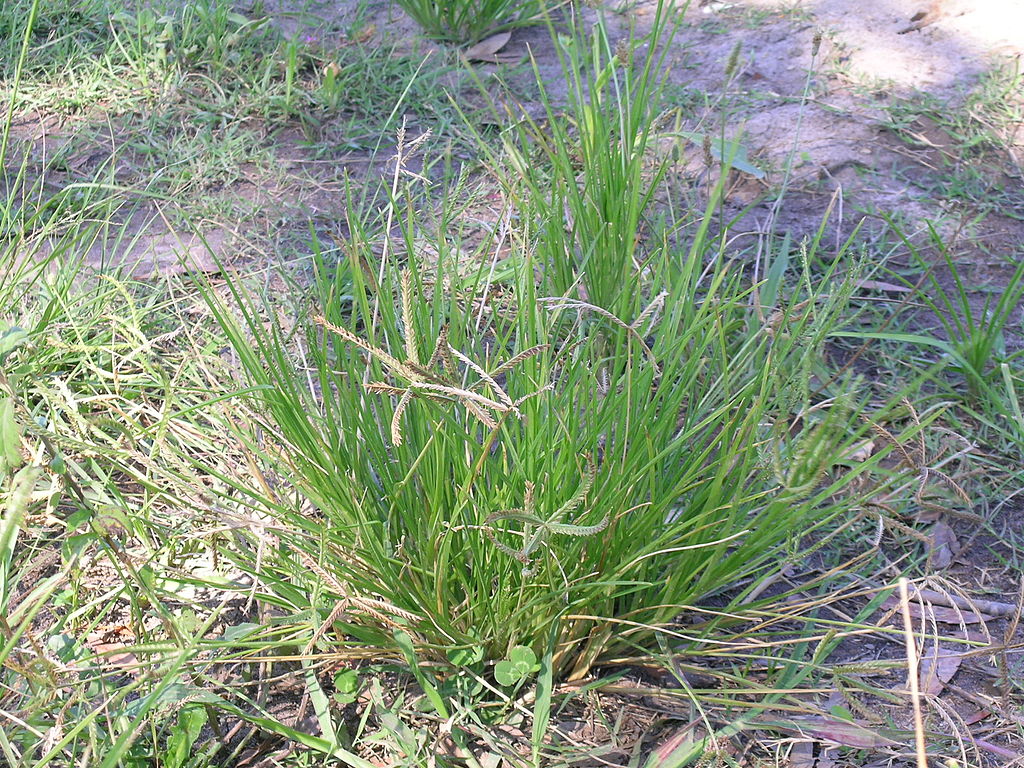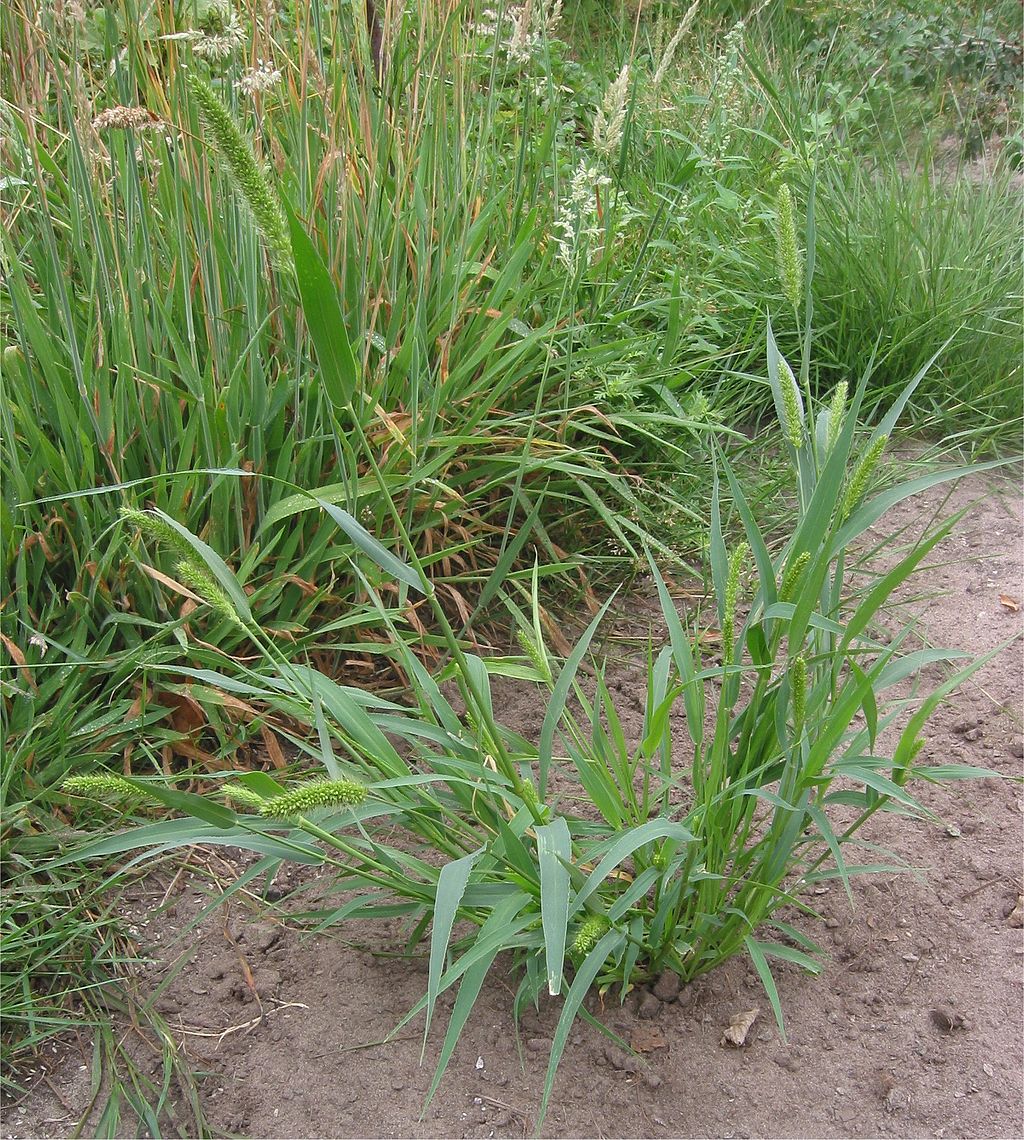VIDEO: How to Identify and Get Rid of Grassy Lawn Weeds in Maryland
Feel like weeds are ruining your life?
It might sound dramatic, but it’s quite easy to be exasperated by weeds when they pop up out of nowhere and take over your lawn.
You pull them, spray them, yell at them. And just when you think you’ve eliminated them for good, weeds find their way back.
What’s more, some weeds can be sneakier than others. There are weeds known as “grassy weeds” that often look similar to the blades of your lawn -- maybe their color is slightly different or they are coarser or taller -- but they can almost fool you. Once they start growing strong, then they stand out and become blemishes tainting your perfect yard.
Let’s take a look at how you can spot these lawn intruders and knock them out for good.
How to Identify Grassy Lawn Weeds
A weed by definition is any undesirable plant that shows up in your landscape. There are generally two main types of weeds: broadleaf weeds and grassy weeds. Broadleaf weeds have wide leaves; a dandelion would be a good example. Grassy weeds, however, can have similarities to the grasses you want in your lawn, which is why they call them grassy. But, while they resemble grass, they tend to look slightly out of place. They tend to grow higher and appear in a different color, standing out from the rest of our lawn.
Once you see these grass-like weeds in your lawn, you may be wondering what you can do about them.
Identification is the first, and most important step. Once you know what weed you’re dealing with, then you can explore ways to control it. This is why we have put together a list of the worst offenders, and how you can identify them and get rid of these grassy lawn weeds in Central and Southern Maryland.
Use This Lawn Weed ID Tool to Spot Weeds in Your Lawn
1. Annual Bluegrass
Sure, spring is the season for many weeds, but some grassy weeds can be equally menacing in the fall.
Take poa annua or annual bluegrass, for instance. This annual grass spreads easily and infests lawns and landscapes. With a lighter, brighter green color, a softer texture, and blades that curl toward their centers, they can make your lawn look rather patchy.  Central and Southern Maryland lawns are typically tall fescue or perennial bluegrass lawns, so this clumping weed starts to look rather out of place pretty quickly. Unfortunately, it grows just as fast, so by the time you notice it, this grassy weed has developed into a pretty big patch.
Central and Southern Maryland lawns are typically tall fescue or perennial bluegrass lawns, so this clumping weed starts to look rather out of place pretty quickly. Unfortunately, it grows just as fast, so by the time you notice it, this grassy weed has developed into a pretty big patch.
A prolific seed producer, annual bluegrass can germinate 12 months of the year with most germination happening between September and November.
A preemergent herbicide application in the late summer/early fall can target this weed right before it’s too late and reaches max germination.
2. Crabgrass
The king of all grassy weeds, crabgrass likes the sun and warm temperatures.
This bully takes advantage of thin, stressed lawns, forcing its way in. If your lawn is dry, lacks nutrients, or doesn’t drain well, it could be a prime crabgrass target.  Like other grassy weeds, crabgrass is aggressive. In fact, each plant can produce more than 75,000 seeds -- that’s a lot. And as they grow, they begin to choke out the desirable grass you want to grow in your lawn. Then, to make matters worse, when it dies out, it just leaves a thin, bare area behind that will just fill in with more weeds later.
Like other grassy weeds, crabgrass is aggressive. In fact, each plant can produce more than 75,000 seeds -- that’s a lot. And as they grow, they begin to choke out the desirable grass you want to grow in your lawn. Then, to make matters worse, when it dies out, it just leaves a thin, bare area behind that will just fill in with more weeds later.
Like with annual bluegrass, pre-emergent weed control is the ideal way to get ahead of crabgrass outbreaks. But while annual bluegrass is best controlled in fall, crabgrass is best tackled in early spring.
Then, where there are breakthroughs, maybe along edges or in thin lawn areas, post-emergent weed control products can target these invaders.
3. Goosegrass
This summer annual grassy weed grows well in compacted and poorly drained soil. You might see it emerge in a lawn that’s been mowed too short.
While it looks quite a bit like crabgrass, goosegrass is sometimes called “silver crabgrass” because it has whitish, flat blades.  As if being an eyesore isn’t enough, this weed is also prone to disease.
As if being an eyesore isn’t enough, this weed is also prone to disease.
A pre-emergent weed control application in the spring can help prevent goosegrass, and post-emergent treatments can be used to handle any weeds that do get through.
4. Foxtail
This grassy weed gets its name from its foxtail-like, fluffy top.
Since this tail-like top stands out, this one is hard to miss, making it a serious eyesore.  Foxtail comes in three types: yellow, green, and giant. But your best plan of attack is pre-emergent herbicides in the spring, followed by post-emergent herbicides for those weeds that happen to pop up during the summer.
Foxtail comes in three types: yellow, green, and giant. But your best plan of attack is pre-emergent herbicides in the spring, followed by post-emergent herbicides for those weeds that happen to pop up during the summer.
Your Wish to Kill Grassy Lawn Weeds Is Our Command
While there are more unwanted grassy weeds in Central and Southern Maryland, these are the four we deal with the most.
But no matter which ones are plaguing your lawn, taking advantage of proper lawn care practices, including fertilization, adequate irrigation, proper mowing, and lawn aeration and overseeding, can help promote a thicker, greener lawn that has the power to shut many weeds out. This means mowing to a 3.5- to 4-inch height; watering at infrequent, longer intervals; having regular fertilization targeted to your lawn’s specific deficiencies; and annual aeration and overseeding that prevents compaction and encourages thicker growth.
Weed control is serious business. Whether you’re dealing with broadleaf weeds or grassy weeds -- or maybe you’re not sure what kind of weed you have -- we know it can be frustrating.
But you shouldn’t have to be able to identify grassy lawn weeds overnight. That’s our job, and we’ve got it covered.
Natural Green can help you by offering a complete, proactive lawn care program that includes proper fertilization, as well as both pre-emergent and post-emergent weed control treatments throughout the growing season. Even the sneakiest weeds won’t have a chance when you choose to have a professional eye on your property regularly, keeping them in check.
Grassy weeds ruining your day? We’d love to help. Get started today with a free quote. Together, we’ll prepare a customized plan so you can take back control of your lawn.
Image Source: Annual Bluegrass, Goosegrass, Foxtail
Feel like weeds are ruining your life?
It might sound dramatic, but it’s quite easy to be exasperated by weeds when they pop up out of nowhere and take over your lawn.
You pull them, spray them, yell at them. And just when you think you’ve eliminated them for good, weeds find their way back.
What’s more, some weeds can be sneakier than others. There are weeds known as “grassy weeds” that often look similar to the blades of your lawn -- maybe their color is slightly different or they are coarser or taller -- but they can almost fool you. Once they start growing strong, then they stand out and become blemishes tainting your perfect yard.
Let’s take a look at how you can spot these lawn intruders and knock them out for good.
How to Identify Grassy Lawn Weeds
A weed by definition is any undesirable plant that shows up in your landscape. There are generally two main types of weeds: broadleaf weeds and grassy weeds. Broadleaf weeds have wide leaves; a dandelion would be a good example. Grassy weeds, however, can have similarities to the grasses you want in your lawn, which is why they call them grassy. But, while they resemble grass, they tend to look slightly out of place. They tend to grow higher and appear in a different color, standing out from the rest of our lawn.
Once you see these grass-like weeds in your lawn, you may be wondering what you can do about them.
Identification is the first, and most important step. Once you know what weed you’re dealing with, then you can explore ways to control it. This is why we have put together a list of the worst offenders, and how you can identify them and get rid of these grassy lawn weeds in Central and Southern Maryland.
Use This Lawn Weed ID Tool to Spot Weeds in Your Lawn
1. Annual Bluegrass
Sure, spring is the season for many weeds, but some grassy weeds can be equally menacing in the fall.
Take poa annua or annual bluegrass, for instance. This annual grass spreads easily and infests lawns and landscapes. With a lighter, brighter green color, a softer texture, and blades that curl toward their centers, they can make your lawn look rather patchy.  Central and Southern Maryland lawns are typically tall fescue or perennial bluegrass lawns, so this clumping weed starts to look rather out of place pretty quickly. Unfortunately, it grows just as fast, so by the time you notice it, this grassy weed has developed into a pretty big patch.
Central and Southern Maryland lawns are typically tall fescue or perennial bluegrass lawns, so this clumping weed starts to look rather out of place pretty quickly. Unfortunately, it grows just as fast, so by the time you notice it, this grassy weed has developed into a pretty big patch.
A prolific seed producer, annual bluegrass can germinate 12 months of the year with most germination happening between September and November.
A preemergent herbicide application in the late summer/early fall can target this weed right before it’s too late and reaches max germination.
2. Crabgrass
The king of all grassy weeds, crabgrass likes the sun and warm temperatures.
This bully takes advantage of thin, stressed lawns, forcing its way in. If your lawn is dry, lacks nutrients, or doesn’t drain well, it could be a prime crabgrass target.  Like other grassy weeds, crabgrass is aggressive. In fact, each plant can produce more than 75,000 seeds -- that’s a lot. And as they grow, they begin to choke out the desirable grass you want to grow in your lawn. Then, to make matters worse, when it dies out, it just leaves a thin, bare area behind that will just fill in with more weeds later.
Like other grassy weeds, crabgrass is aggressive. In fact, each plant can produce more than 75,000 seeds -- that’s a lot. And as they grow, they begin to choke out the desirable grass you want to grow in your lawn. Then, to make matters worse, when it dies out, it just leaves a thin, bare area behind that will just fill in with more weeds later.
Like with annual bluegrass, pre-emergent weed control is the ideal way to get ahead of crabgrass outbreaks. But while annual bluegrass is best controlled in fall, crabgrass is best tackled in early spring.
Then, where there are breakthroughs, maybe along edges or in thin lawn areas, post-emergent weed control products can target these invaders.
3. Goosegrass
This summer annual grassy weed grows well in compacted and poorly drained soil. You might see it emerge in a lawn that’s been mowed too short.
While it looks quite a bit like crabgrass, goosegrass is sometimes called “silver crabgrass” because it has whitish, flat blades.  As if being an eyesore isn’t enough, this weed is also prone to disease.
As if being an eyesore isn’t enough, this weed is also prone to disease.
A pre-emergent weed control application in the spring can help prevent goosegrass, and post-emergent treatments can be used to handle any weeds that do get through.
4. Foxtail
This grassy weed gets its name from its foxtail-like, fluffy top.
Since this tail-like top stands out, this one is hard to miss, making it a serious eyesore.  Foxtail comes in three types: yellow, green, and giant. But your best plan of attack is pre-emergent herbicides in the spring, followed by post-emergent herbicides for those weeds that happen to pop up during the summer.
Foxtail comes in three types: yellow, green, and giant. But your best plan of attack is pre-emergent herbicides in the spring, followed by post-emergent herbicides for those weeds that happen to pop up during the summer.
Your Wish to Kill Grassy Lawn Weeds Is Our Command
While there are more unwanted grassy weeds in Central and Southern Maryland, these are the four we deal with the most.
But no matter which ones are plaguing your lawn, taking advantage of proper lawn care practices, including fertilization, adequate irrigation, proper mowing, and lawn aeration and overseeding, can help promote a thicker, greener lawn that has the power to shut many weeds out. This means mowing to a 3.5- to 4-inch height; watering at infrequent, longer intervals; having regular fertilization targeted to your lawn’s specific deficiencies; and annual aeration and overseeding that prevents compaction and encourages thicker growth.
Weed control is serious business. Whether you’re dealing with broadleaf weeds or grassy weeds -- or maybe you’re not sure what kind of weed you have -- we know it can be frustrating.
But you shouldn’t have to be able to identify grassy lawn weeds overnight. That’s our job, and we’ve got it covered.
Natural Green can help you by offering a complete, proactive lawn care program that includes proper fertilization, as well as both pre-emergent and post-emergent weed control treatments throughout the growing season. Even the sneakiest weeds won’t have a chance when you choose to have a professional eye on your property regularly, keeping them in check.
Grassy weeds ruining your day? We’d love to help. Get started today with a free quote. Together, we’ll prepare a customized plan so you can take back control of your lawn.
Image Source: Annual Bluegrass, Goosegrass, Foxtail


